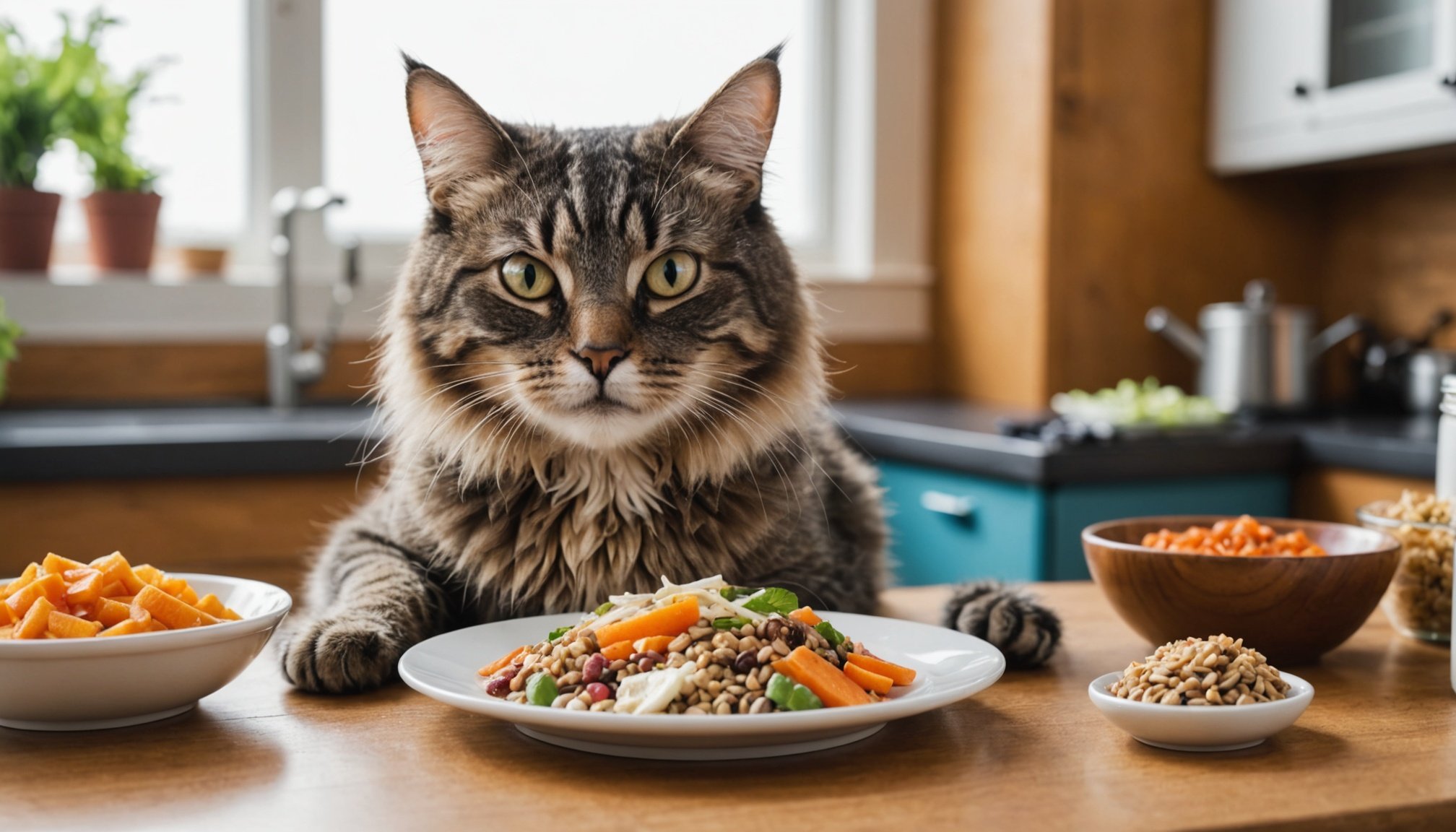Understanding Diabetes in Senior Cats
Diabetes in cats is a significant health concern, particularly for senior cat health. It is essential for cat owners to be aware of how to manage feline diabetes. The condition is common, especially in older cats, and requires attentive care and management to ensure a good quality of life for your pet.
Be aware of symptoms such as increased thirst, frequent urination, weight loss despite a healthy appetite, and lethargy. These signs indicate that your senior cat may need medical attention. Recognising these symptoms early can lead to timely diagnosis, which is crucial for effective feline diabetes management.
Additional reading : Empowering your canine: the ultimate guide to training dogs for seizure detection and alerting
Once diagnosed, managing diabetes in cats involves a combination of insulin therapy, regular blood sugar monitoring, and dietary adjustments. Senior cat health improves significantly with a tailored approach, focusing on controlled glucose levels and overall wellbeing. The importance of ongoing, consistent management cannot be overstated; it helps prevent complications and ensures longevity.
Understanding diabetes in senior cats means adopting proactive health practices and maintaining open communication with your veterinarian. Regular health checks and discussions about potential dietary or medication changes are pivotal in managing your cat’s condition effectively.
Topic to read : Comprehensive care tips for your homebound turtle: ensuring happy and healthy living!
Common Pitfalls in Feeding Diabetic Cats
Feeding diabetic senior cats can be challenging, with frequent misconceptions leading to errors. It’s crucial to understand these feeding mistakes to ensure proper feline diabetes management. Many cat owners mistakenly believe that all grain-free foods are suitable for diabetic cats. However, not all carbohydrate substitutes are beneficial. It’s essential to focus on low-carbohydrate options instead of simply avoiding grains.
Another common dietary error is neglecting portion sizes. Overfeeding, even healthy diabetic cat food, can destabilise blood sugar levels, affecting senior cat health. Understanding the right portion sizes and maintaining a consistent feeding schedule significantly contributes to diabetes management.
Gradual transitions between diets are often overlooked, causing digestive distress. Switching foods abruptly can lead to digestive issues and deter the cat from adapting to a new, healthier diet. A gradual introduction to new food choices forms part of a successful feline diabetes management approach.
By addressing these misconceptions and errors, cat owners can provide better care. Recognising and avoiding these pitfalls promotes better health outcomes for diabetic senior cats, enhancing their quality of life. Empower yourself with knowledge to ensure the best dietary support for your furry companions.
Nutritional Requirements for Diabetic Senior Cats
Understanding the nutritional needs of diabetic senior cats is essential in managing their health effectively. Senior cats with diabetes thrive on a balanced diet that prioritises specific nutrients. High protein content is crucial for maintaining muscle mass and supporting overall vitality. Proteins like chicken or turkey are excellent options for diabetic cats, offering essential nutrients without unnecessary fillers.
Equally important, low carbohydrate diets play a significant role in regulating blood sugar levels. Opt for diabetic cat food that concentrates more on protein than carbs. Keeping carbohydrate intake low helps in preventing glucose spikes post-meals, which is crucial for managing diabetes.
The inclusion of fibres and healthy fats also plays a beneficial role in nutrition. Soluble fibre aids digestion, while healthy fats, such as those from fish oil, promote a shiny coat and support brain health. Balancing fibre and fat intake facilitates effective blood sugar management, enhancing overall senior cat health.
Lastly, not all fats are equal—prioritise Omega-3 rich sources. Addressing the nutritional foundation helps in stabilising health, minimising complications, and ensuring better diabetic management. Always consult your veterinarian for tailored dietary guidance ensuring all specific needs are met efficiently.
Suitable Ingredients for a Diabetic Diet
When crafting a diet for diabetic cats, it is vital to select diabetic-safe ingredients that align with their nutritional needs. Proteins such as chicken, turkey, and fish serve as excellent foundational ingredients in diabetic cat food, providing necessary nutrients without contributing to glucose spikes. These proteins are crucial for lean body mass preservation, supporting overall senior cat health.
Incorporating suitable carbohydrates is key. Opt for low-glycemic options like peas and sweet potatoes, which release energy slowly, helping maintain stable blood sugar levels. Avoid high-glycemic carbohydrates such as corn and wheat that lead to unpredictable glucose spikes.
Selecting healthy fats like Omega-3 found in fish oil and flaxseed is beneficial for diabetic cats. These fats enhance skin health, promote a shiny coat, and support cognitive functions without adversely affecting blood sugar levels.
It is essential to steer clear of harmful ingredients like artificial additives and high-fructose corn syrup that can complicate feline diabetes management. Understanding and choosing the right cat food ingredients plays a significant role in regulating blood sugar and promoting senior cat health. Always consult a veterinarian when developing a tailored dietary plan for your diabetic cat.
Recipes for a Balanced Diabetic Diet
Creating diabetic cat recipes that satisfy the nutritional needs of senior cats is essential for maintaining their health. Crafting your own homemade cat food allows control over what your feline friend consumes, ensuring it aligns with their dietary requirements. One simple recipe involves combining boiled chicken with low-glycemic vegetables like sweet potatoes and peas, providing essential nutrients without impacting glucose levels negatively.
Diabetic cat recipes should focus on high protein content. Incorporating items like turkey or fish replaces the need for unhealthy fillers found in some commercial foods. These proteins are not only highly digestible but also crucial for maintaining lean muscle mass.
When preparing and storing these healthy meals, it’s important to ensure fresh ingredients and proper storage methods to maintain their nutritional integrity. Freeze portions for convenience and defrost as needed, preserving their freshness and efficacy.
Before transitioning to these recipes, consult your veterinarian to confirm their suitability for your cat’s specific health needs. Introducing new foods should be done gradually to monitor how your cat adapts to changes, preventing digestive distress and ensuring a smooth dietary transition.
Portion Control and Meal Planning
Proper portion sizes are crucial for managing feline diabetes and maintaining optimal senior cat health. Determining the right amount of food depends on your cat’s weight, activity level, and individual nutritional needs. Overfeeding, even healthy food, can destabilise blood glucose levels, while underfeeding may lead to malnutrition.
Meal frequency is another essential factor in balancing blood sugar levels. Feeding small, regular meals throughout the day helps maintain stable glucose levels, preventing spikes or drops. A consistent feeding schedule works best for managing diabetes, helping your cat’s body to anticipate and regulate its insulin response.
Adopting strategies for monitoring portion sizes involves regular weighing of food and adjusting according to your cat’s responses. Gradual changes rather than abrupt ones are key to effective management, preventing digestive issues and promoting adaptability.
Always consult your veterinarian to tailor a feeding schedule specific to your cat’s needs. Regular vet consultations ensure that dietary plans stay effective, and any necessary adjustments can be made promptly, supporting the ongoing health of diabetic senior cats effectively.
Monitoring and Adjusting Diet
Managing diabetes in cats effectively requires diligent monitoring and timely dietary adjustments. Accurate blood sugar monitoring is crucial for understanding your cat’s response to its current diet and feline diabetes management plan. Regular testing using blood glucose meters or continuous glucose monitors can provide valuable insights into how well your cat is metabolizing its food, and whether its senior cat health is being maintained.
Recognising signs that point to necessary changes in diet is equally important. Unexpected increases in thirst, urination, or lethargy may indicate that your current regimen needs fine-tuning. These changes can often be managed by altering portion sizes, adjusting feeding schedules, or incorporating different diabetic cat food options that better align with your cat’s nutritional needs.
Engaging in regular vet consultations is imperative. The guidance of a veterinarian ensures that your cat’s dietary adjustments are both safe and effective. Regular assessments provide a platform to discuss any symptoms observed at home and evaluate the impact of implemented changes. Veterinary advice is invaluable, as it offers both reassurance and professional strategies tailored to your cat’s individual health needs. Proactive care enhances your cat’s comfort and quality of life.
Expert Opinions and Case Studies
Incorporating veterinary advice is invaluable in managing feline diabetes effectively. Veterinarians bring expertise that helps shape individualized care plans focused on maintaining senior cat health. They offer tailored guidance on insulin use, dietary choices, and overall health strategies designed to meet the specific needs of each cat.
A particularly telling success story involves a senior cat whose condition improved significantly through diet adaptation and regular blood sugar monitoring. Once struggling with inconsistent glucose levels, the cat achieved stability because its owner adhered to a vet-recommended feeding schedule and low-glycemic, diabetic-safe ingredients. This case exemplifies how precise management and consistent care can dramatically enhance a cat’s quality of life.
Another case study focused on a veterinary clinic where a standardised protocol led to a 30% improvement in feline diabetes management outcomes. By employing continuous glucose monitoring and patient-specific meal planning, the clinic demonstrated a notable reduction in hypoglycemic episodes.
Overall, case studies and expert guidance reinforce the significance of considering individual cat needs. With professional support, cat owners are better equipped to make informed decisions, fostering both prolonged health and optimal diabetes management for their feline companions.










